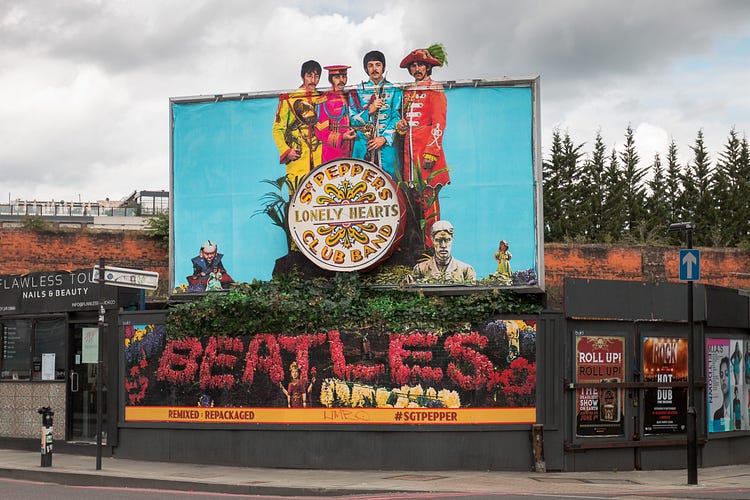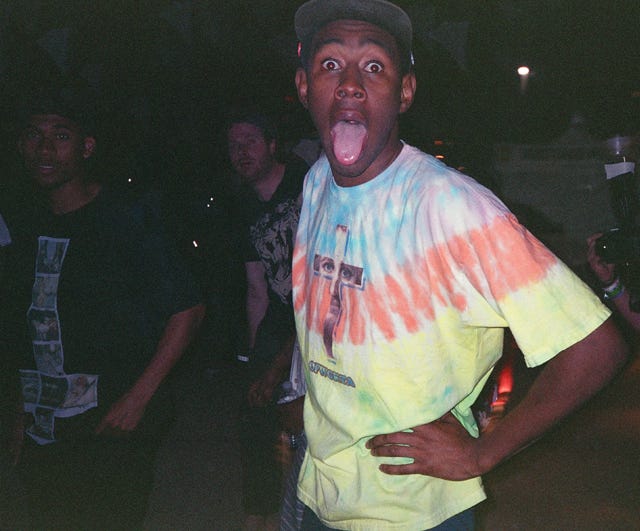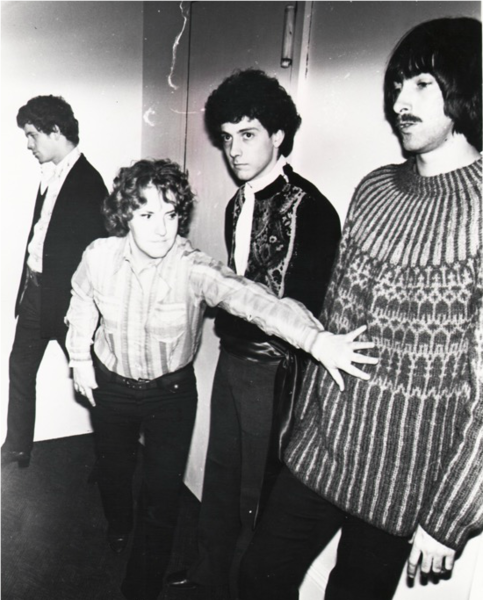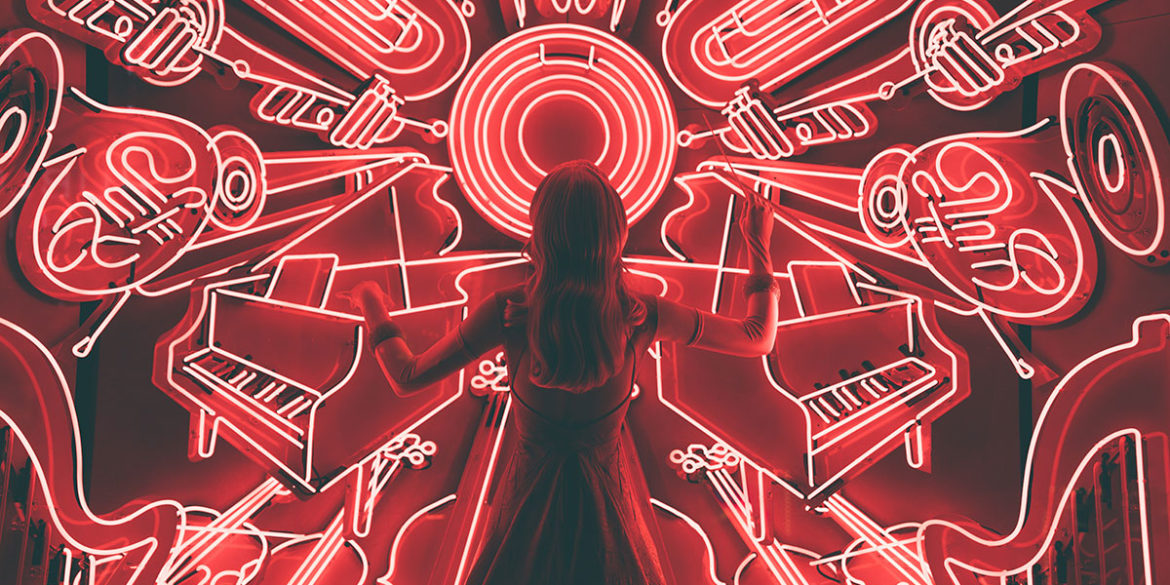ALBUM ARTWORK, AN ARTIST’S VISUAL IDENTITY

Historically, album artwork has been utilised as a means for artists to communicate their vision and intent to current and potential listeners. Alike most packaging, the artwork prepares people for what they are about to consume, providing them with a mental shortcut. With the ability to alter an individual’s perception of what they are about to receive (for better or worse), artwork has played a vital role in music since its inception in 1938, when Columbia records hired the first ever art director, Alex Steinweiss. At a time when photographs and interviews were not as readily available as they are today, cover art allowed people to connect to the artists and their vision. Since this initial introduction, it has evolved in both structure and substance providing a unique representation of the development of society. While initially artwork consisted of hand drawn illustrations, technological development in the 1950s brought with it a switch to photography. Covers with scenes portraying ‘normal’ life during this time and head shots were most common. Artists were suddenly given an opportunity to express themselves through a medium other than music, exceptionally demonstrated in the 1960s with the rise of psychedelia. The Beatles’ Sgt. Pepper’s Lonely Hearts Club Band graphically changed album artwork, initiating a surge in creativity and a pushing of boundaries. Fast forward to the music industry of today, the increase in digital sales over the past decade has brought with it a steady deterioration in album art. With many believing that it’s main purpose is to entice consumers in a physical store, a lack of interest in the artwork has become prevalent. This information poses the question, is the album cover dying? In what is considered the digital age, the necessity for cover art may not be universally understood. However, a significant number of music fanatics would suggest otherwise.
With music streaming services such as Spotify and Soundcloud obliging artists to include cover art with their music, it would appear that album artwork in 2018 has been reduced to a formality. Now appearing more regularly as small thumbnails on electronic devices rather than on physical records, album art was invented to assist in the selling of vinyl records in tangible stores. With it’s original purpose seeming to be a thing of the past, the importance of album artwork in the music industry of today has become questionable. However, with lower attention spans and faster information processing speeds, many believe that creating visual elements that instantly catch the eye of consumers is exceedingly significant. According to graphic designer Mihailo Andic, “you have to either grab their attention or you lose them right away.” In many instances, album artwork is the first interaction a consumer will have with an artist’s work. With the surge in digital music and the power of the internet, the chances of forming a visual connection has been dramatically increased. However, now that the record store shelves have been replaced by streaming sites and social media pages, cover art not only has to compete with that of other albums, it has to make an impression next to a multitude of various media vying for attention. This highlights the importance for album artwork to now be regarded as artist artwork in order to stand out from other musicians, who are essentially their competitors. Bands and solo performers are frequently defined by their look, what they wear and the quality of their artwork. Reiterating the idea of cohesive visuals, it is now considered of great significance to coordinate all media whether it be music, pictures or videos, in order to effectively market an artist. Forging an emotional connection with listeners through an interesting cover can propel an album to mass reception, reaching more eyes and hopefully ears than if it were sitting on a rack in a store. This is due to the ever increasingly social online world with its rampant sharing nature.
In our fast paced, digitally consumed society, development of a strong visual identity is of greater significance than ever before. Viewing artists as a ‘brand’ allows for the creation of unique, distinctive ‘worlds’ for listeners and fans to become immersed and invested in. When fans feel part of a community, they relish that experience, more than willing to keep returning for more, bringing their friends and sharing the music they revere so much. In a time when the vast majority of music consumption occurs in a digital space, a solid visual identity gives the listener something other than the music to form an emotional attachment to. A cohesive visual identity and quality artwork are not only vital for evolving and growing a fan base, but can play an active role in catching the eye of important figures in the industry. It is also an indicator of how serious and dedicated an artist is, showing an interest in their craft, and therefore attracting the interest of others. While ultimately it is the music that matters most, editorial producer at Complex, Zach Frydenlund believes that “an artist having good artwork goes a long way in getting me to even get to their music.” Some of the greatest albums of all time are considered iconic not just for the music but also the cover. Essentially, the artwork’s purpose is attraction, much like a book cover, and while it is understood that a book should not be judged by its cover, it always will be. While a band may create fantastic music, it could potentially face going unnoticed if the cover is lacklustre. With this in mind, the art should also epitomise the songs on the album, serving as a visual summary, while additionally allowing the artist to express themselves.

Album artwork has the potential to expand well beyond just the cover of a record, acting as a starting point for the complete visual identity of an artist, including merchandise. While a music enthusiast with a Spotify or Soundcloud account does not necessarily need to buy physical records, they may choose to make that purchase if they have formed an emotional connection with the artists chosen visuals, wishing to obtain a tangible memento and hold in their own hands a piece of that artists’ ‘world’. Merchandise has been a popular additional element to an artist’s visual identity for a number of years, allowing fans further opportunities to obtain that tangible experience of their favourite musician and proudly wear that which they have made an emotional connection with. A prime example of this is Tyler, The Creator, whose brand Odd Future has grown a cult-like following with fans just as eager to obtain a piece of his merchandise as they are to purchase his music, buying into the lifestyle. This example highlights the relationship between the music and the brand, allowing consideration of the probability that neither would have been as successful on their own, as separate entities. Through the use of their artwork, artists have the capacity to brand themselves almost overnight. Using the Rolling Stones as an example, their use of a simple logo that resonated with fans created a worship like following, with the logo now instantaneously identifiable and perpetually attached to the band. With such colossal illustrations of the significance of an artist’s visual identity, a number of digital stores now feature formats that are increasingly art-friendly, granting listeners a visual choice. This again highlights the fact that only art that stands out and makes an impression will be truly effective.

Perhaps one of the strongest cases for the importance of album artwork is the vinyl resurgence. In 2017 alone, vinyl records were estimated to sell 40 million units, meaning that sales were approaching $1 billion for the first time this millennium, a landmark that has been untouched since the 1980s when the industry peaked. Music enthusiasts worldwide are succumbing to the nostalgia and desire for a tangible product, collecting both old and new release vinyl records. According to Forbes, a significant number of consumers today long to own a product that they can hold in their hands and the artwork plays an important part in this. Given the fact that you can purchase the Velvet Underground & Nico record and technically own a Warhol, it is not difficult to understand the importance of cover art and why it plays such a vital role in not only the vinyl resurgence but music as a whole. With the resurgence beginning in 2008, it coincided with the launch of popular streaming service Spotify. Not dissimilar from the print industry, as streaming and digital access to music continues to grow and develop, a market for tangibility and the influential, emotional impact it has will always thrive, particularly when nostalgia is involved. It is a common misconception that young people exclusively stream music, operating solely in a digital capacity. According to Vanessa Higgins, CEO of Regent Street and Gold Bar Records, increasingly millennials are opting for something tangible, allowing the vinyl record to take on the role previously held by the CD.
The suggestion that album artwork can be considered irrelevant in todays music industry is not universally accepted. While streaming has taken over the way in which people receive music, it has not totally diminished the value of cover art. The artwork should no longer be considered as just a form of packaging but a way to make music special, providing listeners with an emotional connection and turning a compendium of songs into an experience. In an age of increasingly chaotic newsfeeds and timelines, album artwork is a way to stand out and make an impact. Ultimately, it is now clear just how important it is for every element of an artist’s visuals to be enthralling and captivating and should not be overlooked in the digital age.










